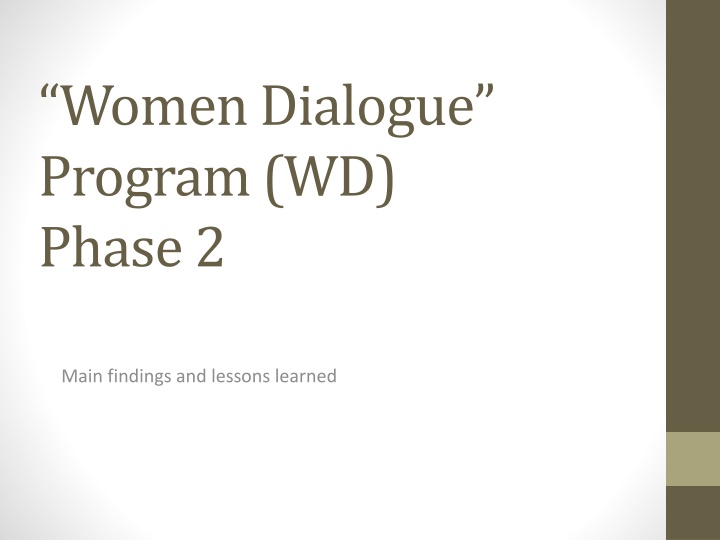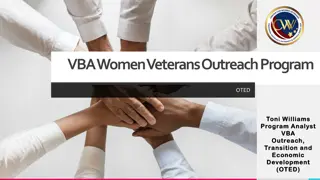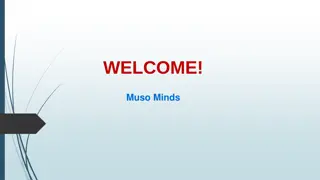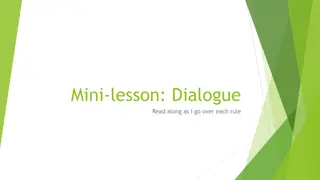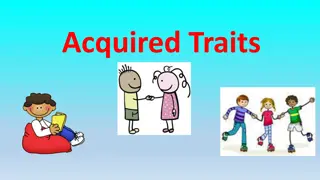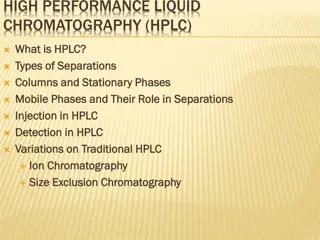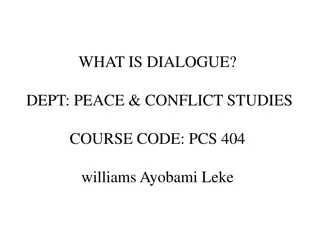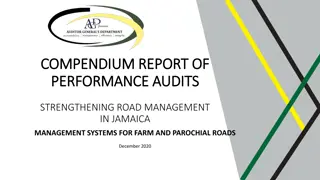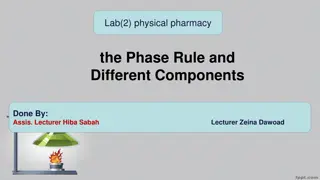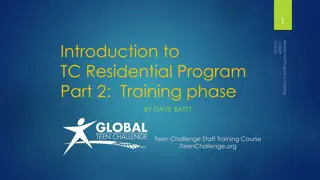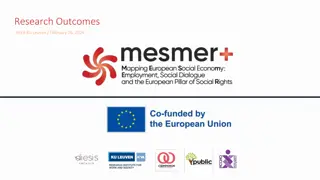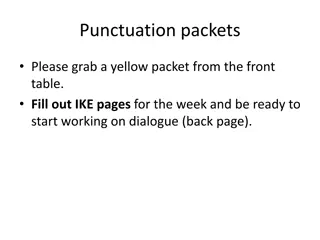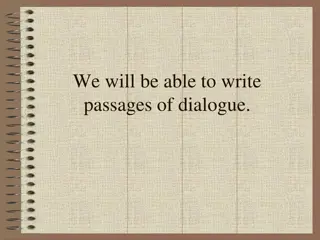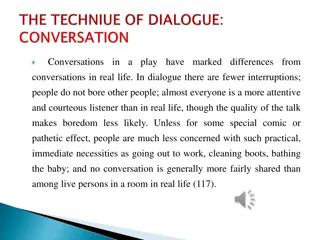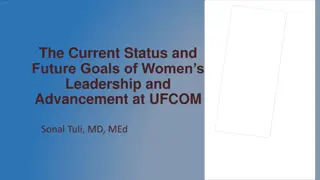Women Dialogue Program Phase 2 Findings and Lessons Learned
Women Dialogue Program (WD) Phase 2 builds on the achievements of Phase 1 to deepen dialogue, provide training, and enhance skills in mediation, negotiation, and advocacy. The program effectively addresses positive attitudes towards dialogue, but participants struggle to apply learned skills in ongoing campaigns. Key findings highlight the motivation to succeed, reliance on personal relationships, and the need for deeper understanding of common interests among participants.
Download Presentation

Please find below an Image/Link to download the presentation.
The content on the website is provided AS IS for your information and personal use only. It may not be sold, licensed, or shared on other websites without obtaining consent from the author.If you encounter any issues during the download, it is possible that the publisher has removed the file from their server.
You are allowed to download the files provided on this website for personal or commercial use, subject to the condition that they are used lawfully. All files are the property of their respective owners.
The content on the website is provided AS IS for your information and personal use only. It may not be sold, licensed, or shared on other websites without obtaining consent from the author.
E N D
Presentation Transcript
Women Dialogue Program (WD) Phase 2 Main findings and lessons learned
What is WD Program about? Since 2013, WD brings together 17 secularist and faith-driven local women's organizations: To create a sustainable exchange Platform, To build mutual trust and respect, To discover shared interests beyond ideologically-driven differences and stereotypes To make the case that there is always room for a common space for dialogue
WhatisWD Phase 2 about? Builds on the Phase 1 achievements in order to: Deepen the dialogue among participants and their respective constituencies and expand its scope to new CSO Provide intensive training on Mediation, Negotiation, Advocacy and Communication, Engage the NGOs in joint legal advocacy
Whatare the objectives of WD Phase 2? Improve positive attitudes towards dialogue Enhance group cohesion Improve participants skills in Mediation, Negotiation and Advocacy
WD Phase 2 Effectiveness WD Phase 2: Successfully addressed participants positive attitudes towards dialogue Managed to work out moments of high tension Created a suitable environment for sincere dialogue Enhanced mutual exchanges and relationships that led to greater cohesion among participants Improved participants skills in Mediation and Negotiation Launched an advocacy campaign on a draft law on gender parity in public employment Met participants expectations on Advocacy training BUT participants ARE NOT making use of these skills in the ongoing campaign
WD Phase 2 key findings(I) Great motivation to make the project succeed BUT participants perceive a responsibility to succeed as a leitmotiv throughout the Women Dialogue Program. This may lead participants to focus on seeking agreement at all costs rather than building agreement on a solid basis of mutual understanding. Reliance on personal relationships as a guarantee to reach agreement Knowing each other s personal story as an important factor BUT, progress on relationships has been mainly fueled by personal affinities while discovering common interests/values is still underdeveloped among participants As a result, misperceptions and prejudices still remain among participants
WD Phase 2 key findings(II) Avoid sensitive subjects as a strategy to save the dialogue The dialogue is smooth as long as topics like the CEDAW convention or the law on heritage are not discussed. Not surprisingly the CEDAW was once again, the bone of contention Sensitive subjects made some participants revert to their negative attitudes towards the dialogue: prejudices, interrupted discussions and sometimes personal offenses Good (and improved) personal relationships BUT only within the Platform: once the WD Program comes to an end participants relations do not exceed some occasional exchanges BUT no institutional collaboration between the NGOs
WD Phase 2 key findings(III) Participants made use of some mediation practices learnt in the program that proved to be effective. a committee of wise women was set up after the discussions stopped over the CEDAW reference BUT the intervention of the trainer has been fundamental to overcome the stalemate The wait and see attitude is a serious deterrent to mutual cooperation between NGOs This is not particularly due to a shortage of ideas BUT participants still look towards SFCG to take initiatives and engage them in common actions
WD Phase 2 key findings(IV) From the NGOs leaders perspective, continuous change in the group composition seems to be a factor that reduces the effectiveness of the program Shared awareness by all civil society members and regardless of their ideological or religious backgrounds that in terms of women's rights, and despite the progress made, there is still a long way to go. Time seems propitious for advocacy initiatives with Parliamentarians and policy-makers in general BUT public awareness-raising should not be neglected so that the law is not felt to be disconnected from ground realities
Lessonslearned(I) Dialogue is not an objective per se but is all about a process that participants must make their own in order to avoid reverting to their former negative behavior/attitudes as it seems, to some extents to be the case in Phase 2. The NGOs participating in the Women Dialogue Phase 2 are not taking advantage of the political momentum which offers huge opportunities for civil society to make its case. Incentives (joint actions/ partnership between SFCG and concerned organizations) are to be addressed to the NGOs in order to make them more pro-active in the advocacy campaign.
Lessonslearned(II) Review the role of the SFCG team in the conduct of program activities in order not to jeopardize the ownership of the program by all participants. Review associations selection criteria and modalities for defining the participating group so as to ensure both program effectiveness and diligent attendance of participants. Propose to participants a more formal recognition of their participation in training The inland regions have a somewhat different situation insofar as relations between civil society and policymakers are rather infrequent
